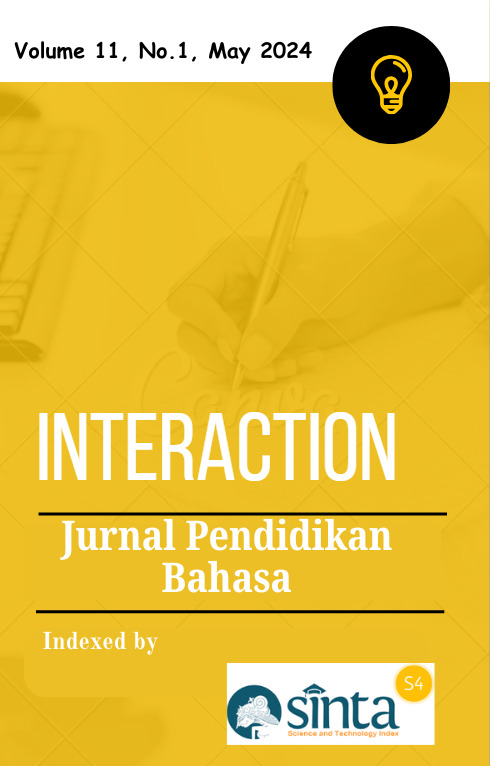Lexical Cohesion Analysis of Muniba Muzari’s “We All Are Perfectly Imperfect” Speech
Abstract
This study aims to characterize the various forms of lexical cohesion in Muniba Muzari's speech. It's a component of the qualitative descriptive approach. The data for this study were gathered using a non-participatory strategy and an observational approach. Research employed the competence-in-equalizing technique and the identity technique as a technique and method for data analysis. This study employed the (Halliday and Hasan 1976) theory of lexical cohesion. The researcher identifies 5 repetitions, 1 synonym, 5 antonyms, and 4 collocations from opinion and reportage within Muniba Mazari's speech. Based on this study, the researcher may conclude that the more prevalent type of lexical coherence discovered in Muniba Mazari's speech and ideas is repetition. The study's findings demonstrated the existence of six different lexical cohesion categories: collocation, hyponymy, synonymy, antonymy, and repetition. The data of this research were words, phrases, and sentences.
Downloads
References
Arifiani, D. M. (2016). An Analysis of Grammatical and Lexical Cohesion in Emma Wattson’s Speech Text on Gender Equality. Under Graduate Thesis, 1–74. http://opac.fah.uinjkt.ac.id/index.php?p=show_detail&id=1567&keywords=
Batubara, M. H., Rahila, C. D. I., & Ridaini, R. (2021). An Analysis Lexical Cohesion In Jakarta Post News. Journal of Linguistics, Literature and Language Teaching (JLLLT), 1(1), 1–7. https://doi.org/10.37249/jlllt.v1i1.278
Creswell, W. J., & Creswell, J. D. (2018). Research Design: Qualitative, Quantitative adn Mixed Methods Approaches. In Journal of Chemical Information and Modeling (Vol. 53, Issue 9).
Crystal, D. (1992). Profiling Linguistic Disability.
Halliday, M. A. K., & Hasan, R. (1976). Cohesion in English (Original work published 1976). 1–383. https://www.taylorfrancis.com/books/9781317869603
Los, U. M. D. E. C. D. E. (n.d.). No 主観的健康感を中心とした在宅高齢者における 健康関連指標に関する共分散構造分析Title. https://www.academia.edu/4093275/Oxford_Dictionary_of_Law_5th_Ed_2003
Mandarani, V. (2020). Grammatical and Lexical Cohesion Analysis of Trump’S Speech Upon Soleimani Assassination. Jurnal Basis, 7(1), 131. https://doi.org/10.33884/basisupb.v7i1.1753
Matthienssen, christian, & Halliday, M. A. . (2014). Halliday ’ s Introduction to Functional Grammar.
Paltridge, B. (1999). Discourse Analysis: An Introduction. In Language (Vol. 75, Issue 3). https://doi.org/10.2307/417076
Rijal, K., Sudarsono, S., & Suhartono, L. (1976). Analysis of Lexical Cohesion. Jurnal Pendidikan Dan …, 1–9. https://jurnal.untan.ac.id/index.php/jpdpb/article/view/33807
Sari, N. E. P., & Anindita, W. K. (2020). Lexical Cohesion Analysis On Adele’s Songs Lyrics In The Album 25. Surakarta English and Literature Journal, 3(1), 22. https://doi.org/10.52429/selju.v3i1.360
Searle, J., & Vanderveken, D. (1985). Foundations of illocutionary logic. In Cambridge University Press 1985 (Vol. 21, Issue 3). Cambridge University.




.png)



22.png)
